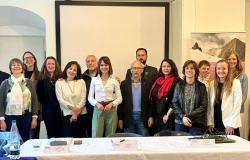G7 Environment: Focus on the Central Apennines in Turin during Planet Week
A model of adaptability and development to face climate crises presented by experts and politicians
During Planet Week, held in Turin in preparation for the G7 on climate, environment and energy, the Central Apennines model was highlighted as an excellent example of adaptability and sustainable development. Initially presented at COP 28 in Dubai, the model was further explored at the Castello del Valentino in Turin, where important figures such as the Minister of the Environment and Energy Security Gilberto Pichetto Fratin and the Extraordinary Commissioner for the 2016 earthquake, Guido Castelli, outlined the strategies implemented in this region to counter the challenges posed by the climate and demographic crises.
The conference, entitled “A part of the world: Central Apennines, a place to live”, saw the participation of various influential personalities, including the mayor of Amatrice, Giorgio Cortellesi, the Vice-Rector of the Polytechnic of Turin, Patrizia Lombardi, and Friar Marco Moroni of the Sacred Convent of Assisi. These experts shared their experiences and visions on the regeneration of territories affected by natural disasters and their revitalization as sustainable communities.
Commissioner Castelli emphasized how the central Apennines are becoming a living laboratory for innovative solutions in adaptation and sustainable development. He underlined the importance of a strategy that integrates economic and social development to combat depopulation, promoting a harmonious coexistence between anthropization and the environment, a concept rooted in these areas for millennia.
One of the key aspects discussed was the way in which the territory is managed to preserve the landscape, combat fragilities and safeguard biodiversity. These efforts are supported by significant state investments through the Complementary Earthquake Plan, which has made it possible to adopt multilevel governance, involving the central State, regions and local administrations in a constructive and continuous dialogue.
The approach adopted not only seeks to solve immediate problems, but also offers itself as a replicable model for other internal areas, combining innovation and tradition for a development strategy that encourages people not only to stay but also to attract new residents. This new model of Apennine civilization is an example of how subsidiarity and cooperation between different levels of government and the private sector can create a network of services and opportunities essential for the rebirth of territories affected by natural disasters.





